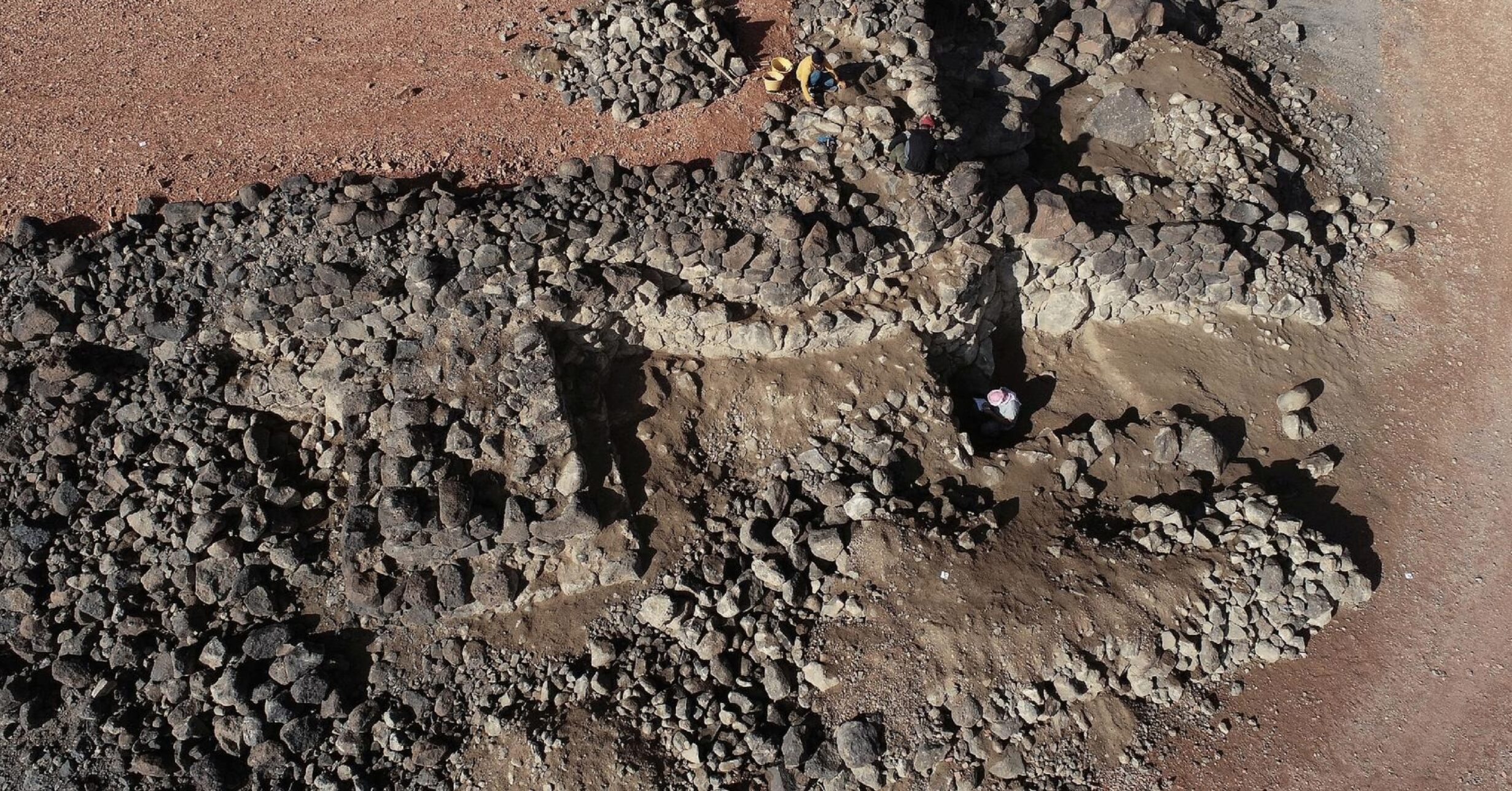
In the North Arabian Desert, archaeologists made a new discovery. They found an old fortification around the Khaybar Oasis. This fort is one of the two largest in Saudi Arabia.
People have been living in oases in this area for quite a long time for around four thousand to five thousand years. Oases are small green spots in the desert. They get water from underground rivers and have high water tables. This makes them cool places with lots of plants and animals, as reported by Cosmos magazine.
People have made special water systems, such as aquifers and channels, to water these places.
The fortification walls would have covered 1,100 hectares
Researchers from France’s Centre National de la Recherche Scientifique (CNRS) and the Saudi Arabian archaeological commission, the Royal Commission for Al-‘Ula, uncovered the ancient fortification.
These fortifications at Khaybar were rather long at around nine miles (14.5 km). They were thick, between about five to eight feet (1.5 to 2.4 meters), and tall with a height of up to roughly sixteen feet (5 meters). The whole area it covered was almost 1,100 hectares, according to Cosmos magazine.
[Press Release 📰] @AF_ALULA & @RCU_SA are delighted with the discovery at #Khaybar by @CNRS teams of a long rampart protecting the oasis. A major breakthrough in the #KhaybarLongDurée project that is revolutionizing the history of the Arabian Peninsula
👉 https://t.co/HS42FqIvcM pic.twitter.com/jX0y5ksCpO— Agence française pour le développement d'AlUla (@AF_ALULA) January 10, 2024
The team of scientists determined that the settlement’s walls were built around 2250 to 1950 BCE. They used radiocarbon dating on samples they found during the dig. Now, after four thousand years, only less than half of the walls and seventy-four defensive structures called bastions remain.
In the Bronze Age (around 3300–1200 BCE), lots of walled oases were discovered in northwestern Arabia. Forts during this time were huge, even like the megaforts in Europe, as reported by Cosmos.
“Dating from the Late third millennium BCE, the ramparts of Khaybar were probably built by Indigenous populations as they settled down and ostentatiously demarcated their oasis territory,” the researchers wrote in their new study.
This massive construction, which stood strong for many centuries before being replaced, is a really important part of the history and culture of northern Arabia, according to Archaeology magazine.
Main reasons for the construction of these fortifications
The researchers suggest three main reasons for building these huge desert defenses. First, the walls protected against moving desert groups, which was a real danger for settled communities in older times.
Second, the fortifications helped deal with problems such as erosion, soil salinization, and sudden floods. These were things that could harm farmland. Lastly, the walls communicated the strength of the group in that they marked their territory. It was a sort of physical display of their social identity.
To verify that these fortifications remain well preserved and are understood, scientists are using modern methods such as remote sensing and 3D scanning. They are meticulously but cautiously mapping, documenting, and studying them, and this allows researchers to make detailed digital models, as reported by Archaeology.
See all the latest news from Greece and the world at Greekreporter.com. Contact our newsroom to report an update or send your story, photos and videos. Follow GR on Google News and subscribe here to our daily email!



